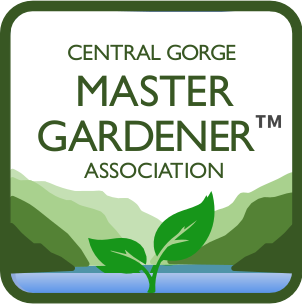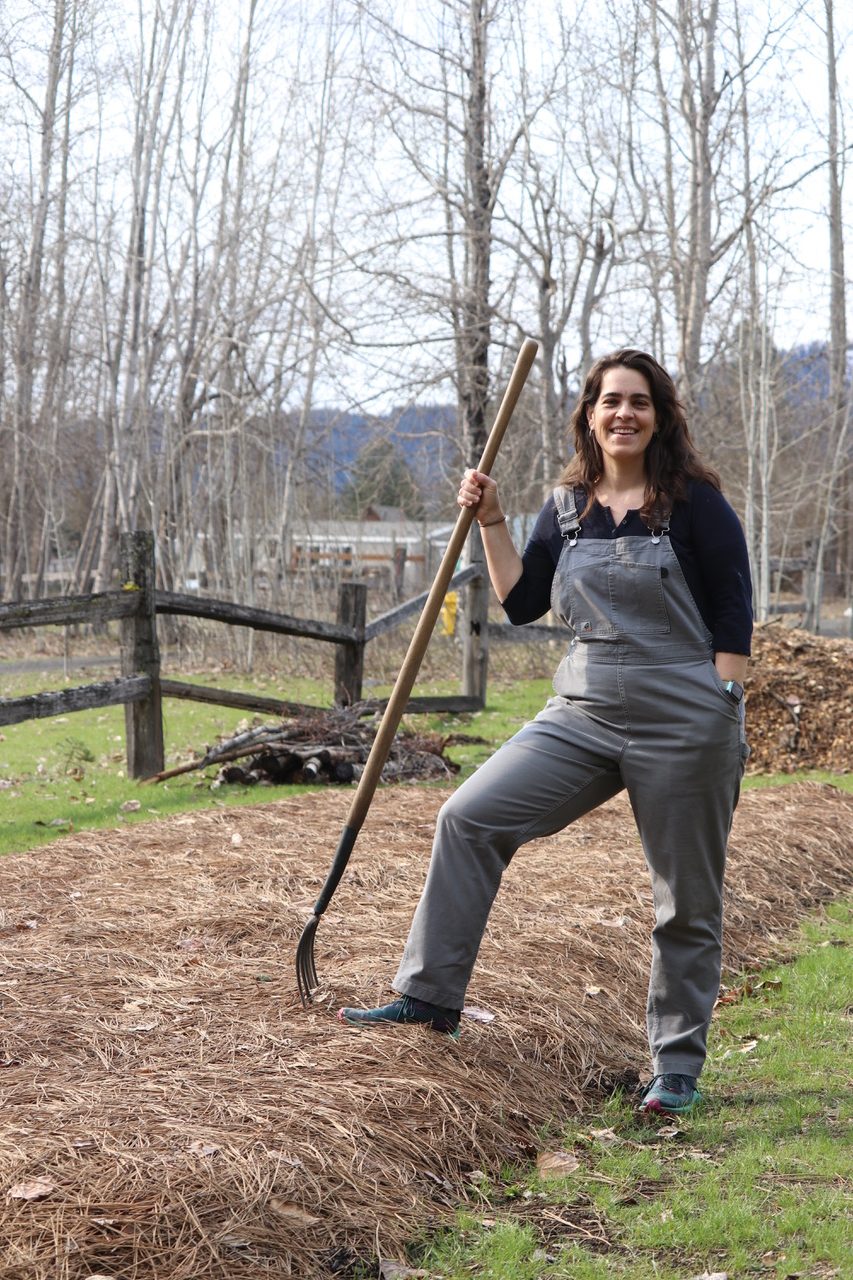Katie Schmidt Finds Her Roots with a Hügelkultur raised bed “I’m a peasant,” she says quite seriously. Then she smiles and explains. Her family’s history has been rooted to the earth for centuries—farmers in Germany and in Catherine the Great’s Russia—and the family continued their craft when they immigrated to the United States, settling in Tigard, Oregon. “Everyone I knew growing up gardened,” she said. Katie Schmidt, in her second year as a Central Gorge Master Gardener, believes her grandparent’s landscaped acreage in Tigard was where she first became a gardener, at least in her mind, though she didn’t spend much time in a real garden until recently. Her father, like his parents, is also an accomplished gardener, still managing a large home garden in Sherwood. But Katie’s interest in gardening laid latent during her first years of marriage, then raising her two sons, Elias and Saul.
Now in high school, the boys are becoming more independent, giving her time to get back to her “peasant” roots and to find the gardener in herself. She and husband Ian VanDeHey live north of Trout Lake on a small acreage along the White Salmon River. It’s gorgeous. Nature has done the landscaping and most people would call that good enough. But Katie wants to work the soil, and that’s the challenge of the site. There is no soil: it’s stones, gravel, and a bit of dust or mud. Hügelkultur The previous owner had brought in a small mound of soil, placing it along a log that served as a raised bed and allowed some planting of perennials. Katie says it was an attempt at Hügelkultur, a centuries-old technique of building soil developed in Germany. That was an inspiration for her, merging a need with her heritage, so she studied Hügelkultur, and, in the past two years, has experimented with creating four new beds, each more complex in its makeup. The most recent bed, which was constructed last fall, is not unlike the lasagna method of gardening, she says.
But the basic materials are surprising for conventional gardeners. First a layer of logs (Katie used Cottonwood, which is one of the preferred species) is placed side by side as the base of the bed. Then succeeding layers of ever smaller logs are interspersed with soil reclaimed from a neighbor’s abandoned garden, compost from a local farm, and manure. Katie says that traditionally the beds can be built as high as six-feet, though she’s happy to limit height to make the project less difficult. Once she had placed a final layer of soil on top, she seeded a pea and barley mix then covered the entire bed with a thick layer of pine needles and left it to overwinter. The technique is perfect for her site. Not only are the materials close at hand, but in time, the beds provide the soil for the peonies and perennials she wants to grow, plants her grandparents grew. Like an oversized compost pile, the rotting organic matter also may add some soil warmth enabling her to extend the short Trout Lake area season. The new beds are giving her hope, but the challenges in Trout Lake aren’t limited to soil. In the short growing season, Katie has had to run out of her log home flailing her arms, wearing only pajamas and slippers to scare off wild turkeys, and had to shoot the invasive ground squirrels that not only compete with the indigenous squirrels, but can wipe out a garden in no time. Added to the natural enemies, snow and freezing temperatures can threaten even in traditionally warm months. It’s not difficult to understand why many in the area stick with a few potted plants and leave the rest to nature.
Katie, the peasant, was inspired by the same passions that drive all gardeners. She hopes to convince her father to build near her so she can have a resident expert at hand. And we all can appreciate her excitement for gardening in the greenhouse, where she is learning all of the plant sale greenhouse duties.
By Jim Black


Leave a Reply